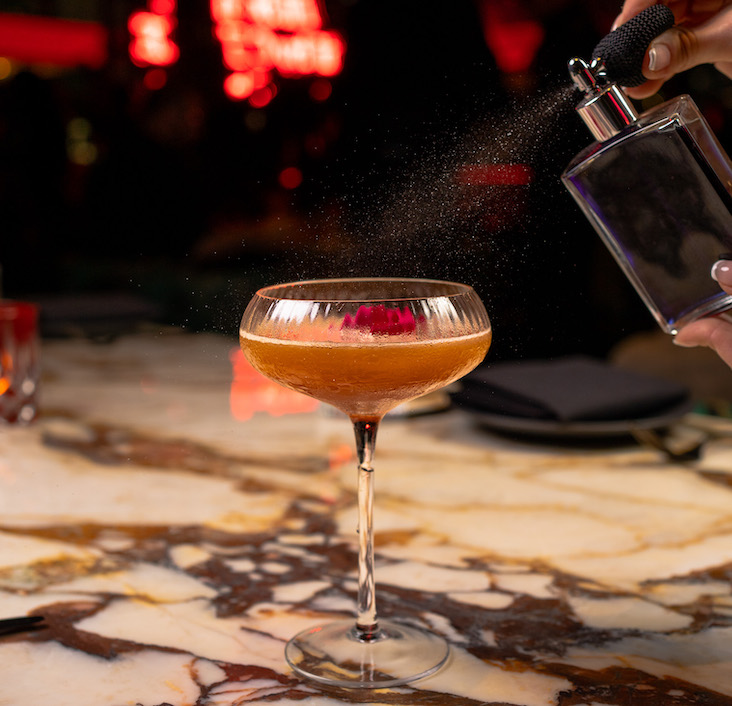Gordon is the third, and most surprising, addition to Colorado’s Oskar Blues Brewery year-round portfolio of canned offerings. It’s a monster of an ale, with 8.7 percent alcohol, an aroma of chocolate, hazelnut, raisin and spicy hop that can be smelled from a yard away, and a massive body of sweet toffee, berry, cocoa and spicy, bitter and citrusy hop. A laudable nightcap, indeed, but definitely not the kind of beer you’d expect in a can. (Oskar Blues Brewery)
Anheuser-Busch makes no claim that its new Redbridge is gluten free for the same reason many candy manufacturers don’t go the nut free route: Since it’s brewed in a facility where barley malt is present, there is a possibility that the beer could contain minute traces of gluten. Having said that, all but the most sensitive of the gluten intolerant should rejoice in this beer, since with its relatively full body, notable nutty bitterness and dry finish, it’s the best-tasting non-barley or wheat beer I’ve come across to date. (Anheuser-Busch)
One of my favorite new labels is Brother Thelonious Belgian Style Abbey Ale from California’s North Coast Brewing, with the late jazz great Thelonious Monk depicted bearing a halo of piano keys and a chalice of dark beer. The artistry continues inside the bottle—a deep red strong ale with a spicy, black licorice accented nose and a sweetly malty body carrying notes of chocolate and soft roast to a warming finish. A long-playing ale for after hours, or at least after dinner. (North Coast Brewing Company)
Beers with charitable connections are hardly new, but Abita Brewing’s Fleur-de-lis Restoration Ale is doubtless one of the most poignant, since $1 for every six-pack sold goes to the Louisiana Disaster Recovery Foundation. And a pretty flavorful helping hand it is, with a bright golden color, dryly perfumey aroma and mildly bitter body that blends soft apple and other fruity notes with a dried leaf hoppiness and a faintly spicy finish. Served chilled, it’s a lovely refresher and a suitable partner to gently spicy foods. (Abita Brewing Company)
March, being the month of St. Patrick, you might be tempted to sip on a stout or two, like Carlow Brewing’s O’Hara’s Irish Stout, the only independently-brewed stout from Eire currently available on this side of the pond. Pitch black with a complex, roasty, almost winey aroma, O’Hara’s starts on the palate with a soft note of chocolate and finishes appetizingly bitter and just slightly tart. Dry enough for oysters, it’s also sufficiently robust to match with meat and cheese dishes. (Distinguished Brands International)
Or perhaps you’d prefer your stout in organic form, as in Wolaver’s Certified Organic Oatmeal Stout. Dark chocolaty on the nose with supporting notes of espresso and roast, it boasts a particularly creamy, almost silky mouthfeel thanks to the oats used in its creation, and a food-friendly flavor of chocolate, well-toasted toffee and hints of black licorice before a coffee-ish finish. Suitable to pair with roast lamb or almost any slow-cooked stew. (Otter Creek Brewing)
A most unusual new offering is Collaboration not Litigation Ale, developed when the owners of Colorado’s Avery Brewing and California’s Russian River Brewing found they both had brands called Salvation. Rather than duke it out in court, the friendly brewers opted to blend their beers together. A whiff of spicy funkiness is detectable just before the fruity malt and rich, nutty hoppiness takes over, and a body that acts much the same, with some faint tartness blending with potent bitterness, peach and apricot malt, chocolate notes and warming alcohol. It’s a bit out of balance, but with such a laudable notion that it’s easy to overlook that slight imperfection. (Avery Brewing Company)
A veteran beer writer and brewing industry observer, Stephen Beaumont is the author of five books on beer and a leader in beer education for service industry professionals. He travels extensively hosting beer tastings and beer dinners, and serves as beer consultant to a diverse range of hospitality companies.
OLIVER’S SUGGESTIONS
Georg Schneider was the man who pried loose the Bavarian royal patent for the brewing of wheat beer and his brewery today produces what is arguably the world’s finest weissbier, or hefeweizen. Schneider Weisse has a full amber color with a haze of yeast left behind after refermentation in the bottle, which gives the beer a voluminous fluffy head, a fine Champagne-like carbonation and complex aromatics of bananas, cloves and smoke. Amazingly versatile, it works with everything from brunch to salads, to a range of Asian dishes. (B. United Importers)
Ayinger Celebrator is a classic of the doppelbock beer style: a strong, dark malty lager style first brewed by monks to sustain them during the 40 long days of Lent. The Bavarians call it “liquid bread” and it’s easy to taste why—the flavor is rich, round and soft, with notes of coffee, chocolate and fresh bread. It’s excellent with beef, venison, duck, pork and sausage. (Merchant du Vin Importers)
Victory Prima Pils is every ounce the equal of its European Pilsner ancestors. A hop cone on its label is apt—the bright gold beer has a very nice fruity hop aroma. The hops are European, but they have a fresh, resiny fruitiness that seems distinctly American. This is a medium-bodied beer sporting just enough malt to hold the whole thing together. The finish is clean and snappy, with bitterness and fresh grain flavors lingering; it’s perfect for smoked salmon. (Victory Brewing Company)
The Old Brewery at Tadcaster in Yorkshire has built a reputation for producing classic British ale styles. Possibly their finest rendition is Samuel Smith’s Imperial Stout. A strong beer at seven percent, it has a nose of good chocolate, vintage port, licorice and coffee, with all these characters following through onto a silky palate. This beer is excellent with almost any dessert, and also makes a fine accompaniment to traditional Mexican dark mole sauces. (Merchant du Vin Importers)
Saisons are farmhouse ales, traditionally made by the farmers themselves. The Dupont brewery, in the Belgian province of Hainaut, produces the world classic Saison Dupont, a blond beer in a Champagne-style bottle. With a lemony, peppery bright nose, effusive carbonation and a very dry, snappy, yeasty palate full of citrus fruit, this beer has herbs and a touch of bracing acidity. It’s wonderful with spicy foods, but works well with oily fish such as salmon, and even barbecue. (Van Berg & deWulf Importers)
While they respect Lindemans’ more traditional sour lambic beers, some beer aficionados turn their noses up at Lindemans Framboise, which combines the sour lambic beer with sweet raspberries. Traditional lambic is much less sweet, but there’s no arguing with this beer when paired with cheesecake, panna cotta or almost anything made with chocolate. It’s bright pinkish red, and has a sweet and sour palate that seems to have a whole raspberry bush in it. Poured into Champagne glasses, it looks terrific and it’s an undeniably great end to a meal. (Merchant du Vin Importers)
Among the best offerings of Quebec’s Unibroue brewery is the bright, fresh Blanche de Chambly. Brewed in the Belgian wheat beer style known as witbier or bi貥 blanche—both terms mean “white beer”—the beer is merely very pale, but the suspended yeast gives it a hazy pale yellow cast. Curacao orange peel and coriander give it the traditional spicy zing, and raw wheat lends it a pleasant acidity. Very light on the palate, it’s still complex—beer’s answer to a Mimosa. (Unibrew USA Importers)
Garrett Oliver is brewmaster and vice president of production for The Brooklyn Brewery, a noted speaker on beer and beer and food pairings, and author of The Brewmaster’s Table: Discovering the Pleasures of Real Beer and Real Food. He is the recipient of the 1998 Russell Schehrer Award for Innovation and Excellence in Brewing and the 2006 Cheers Industry Innovator Award.




